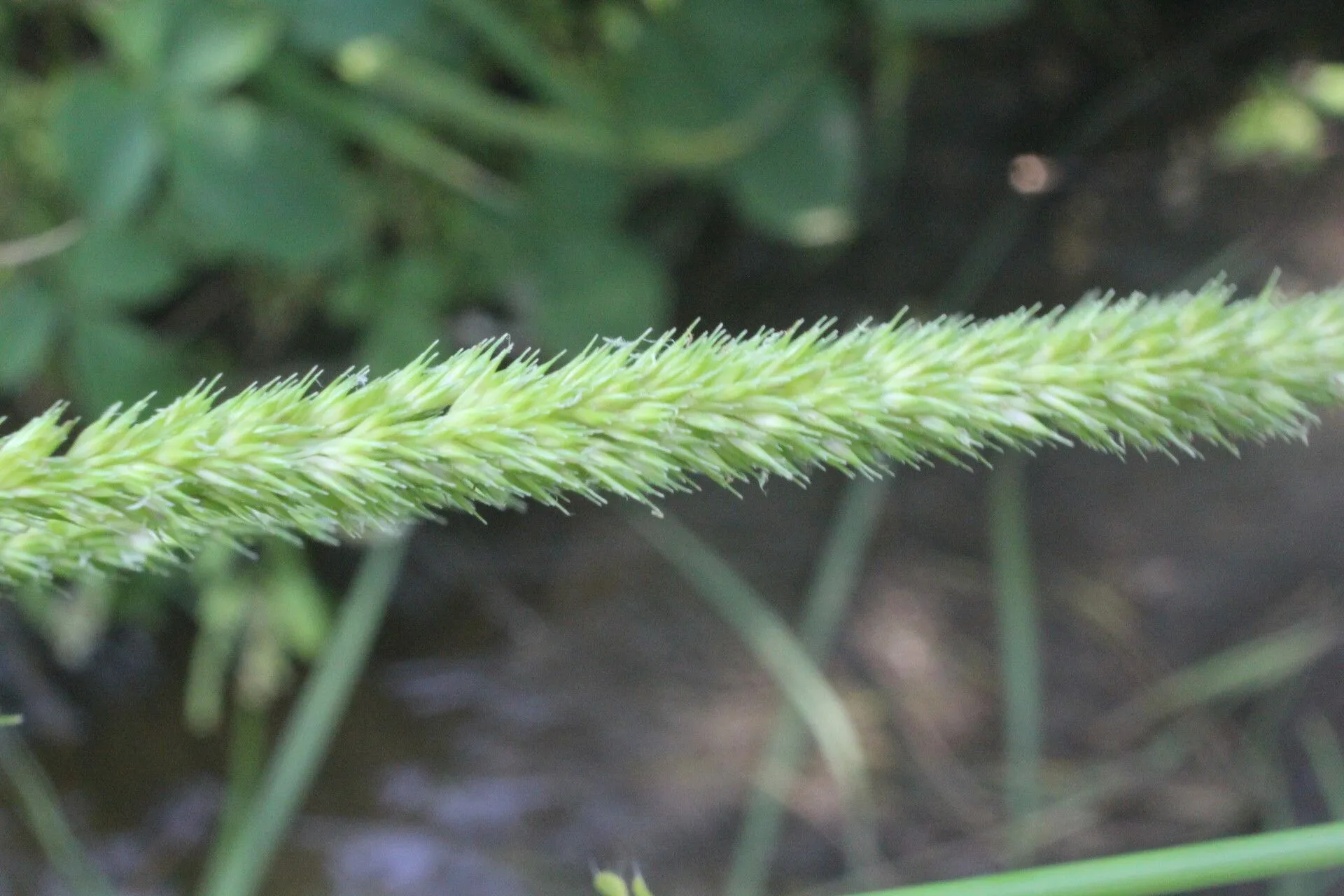
Author: (Rudge) Nees
Bibliography: C.F.P.von Martius, Fl. Bras. Enum. Pl. 2: 276 (1829)
Year: 1829
Status: accepted
Rank: species
Genus: Hymenachne
Vegetable: False
Observations: Trop. & Subtrop. America
Olive hymenachne, scientifically known as Hymenachne amplexicaulis, is a notable species within the family Poaceae. This grass species was initially documented in the renowned botanical work Flora Brasiliensis by C.F.P. von Martius in 1829, capturing the interest of botanists and ecologists alike.
Native to tropical and subtropical regions of the Americas, Olive hymenachne thrives in wetlands and flood-prone areas, where its presence plays a crucial role in the ecosystem. Its robust growth can facilitate soil stabilization and water filtration, which are vital for maintaining the health and functionality of wetland habitats.
The species is characterized by its amplexicaul (stem-clasping) leaf bases, which are a distinctive feature helping in identifying the plant in its natural habitat. This morphological trait not only aids in its identification but also contributes to its adaptability in various environmental conditions, particularly in hydric soils.
Additionally, Olive hymenachne has become a subject of research due to its potential utility and impacts. In its native range, it supports local fauna by providing habitat and food. However, like many species that exhibit vigorous growth in their natural environments, it can become invasive if introduced outside its endemic region, leading to ecological concerns that require careful management strategies.
The study of Hymenachne amplexicaulis remains pertinent for botanists and conservationists, not only in understanding the intrinsic dynamics of tropical and subtropical flora but also in implementing informed ecological preservation and sustainable land use practices.
Eng: west indian marsh grass, olive hymenachne
Spa: camalote
En: Olive hymenachne, West Indian marsh grass, Hymenachne
Zh: 膜稃草
Es: Camalote, Cola de Zoro
: West indian marsh grass
© copyright of the Board of Trustees of the Royal Botanic Gardens, Kew.
© copyright of the Board of Trustees of the Royal Botanic Gardens, Kew.
© copyright of the Board of Trustees of the Royal Botanic Gardens, Kew.
Taken Oct 21, 2015 by Nelson Zamora Villalobos (cc-by-nc)
Taken Oct 21, 2015 by Nelson Zamora Villalobos (cc-by-nc)
Taken Oct 21, 2015 by Nelson Zamora Villalobos (cc-by-nc)
Taken Aug 5, 2020 by Elizabeth Rodriguez (cc-by-sa)
Taken Apr 17, 2019 by OTS – J. González (cc-by-nc-sa)
Taken Sep 29, 2016 by Nelson Zamora Villalobos (cc-by-nc)
Taken Apr 17, 2019 by OTS – J. González (cc-by-nc-sa)
Taken Sep 29, 2016 by Nelson Zamora Villalobos (cc-by-nc)
Taken Apr 17, 2019 by OTS – J. González (cc-by-nc-sa)
Taken Apr 17, 2019 by OTS – J. González (cc-by-nc-sa)
Taken Apr 17, 2019 by OTS – J. González (cc-by-nc-sa)
Taken Apr 17, 2019 by OTS – J. González (cc-by-nc-sa)
Taken Sep 29, 2016 by Nelson Zamora Villalobos (cc-by-nc)
Taken Dec 3, 2015 by OTS – Oviedo-Brenes, Federico (cc-by-nc-sa)
Taken Sep 22, 2020 by dian sukma (cc-by-sa)
Taken Apr 17, 2019 by OTS – J. González (cc-by-nc-sa)
Taken Dec 3, 2015 by OTS – Oviedo-Brenes, Federico (cc-by-nc-sa)
Taken Dec 3, 2015 by OTS – Oviedo-Brenes, Federico (cc-by-nc-sa)
Taken Dec 3, 2015 by OTS – Oviedo-Brenes, Federico (cc-by-nc-sa)
Growth habit>: Graminoid
Family: Myrtaceae Author: (F.Muell.) K.D.Hill & L.A.S.Johnson Bibliography: Telopea 6: 402 (1995) Year: 1995 Status:…
Family: Rubiaceae Author: Pierre ex A.Froehner Bibliography: Notizbl. Bot. Gart. Berlin-Dahlem 1: 237 (1897) Year:…
Family: Sapindaceae Author: Koidz. Bibliography: J. Coll. Sci. Imp. Univ. Tokyo 32(1): 38 (1911) Year:…
Family: Asteraceae Author: A.Gray Bibliography: Pacif. Railr. Rep.: 107 (1857) Year: 1857 Status: accepted Rank:…
Family: Fabaceae Author: Medik. Bibliography: Vorles. Churpfälz. Phys.-Ökon. Ges. 2: 398 (1787) Year: 1787 Status:…
Family: Aspleniaceae Author: (Cav.) Alston Bibliography: Bull. Misc. Inform. Kew 1932: 309 (1932) Year: 1932…